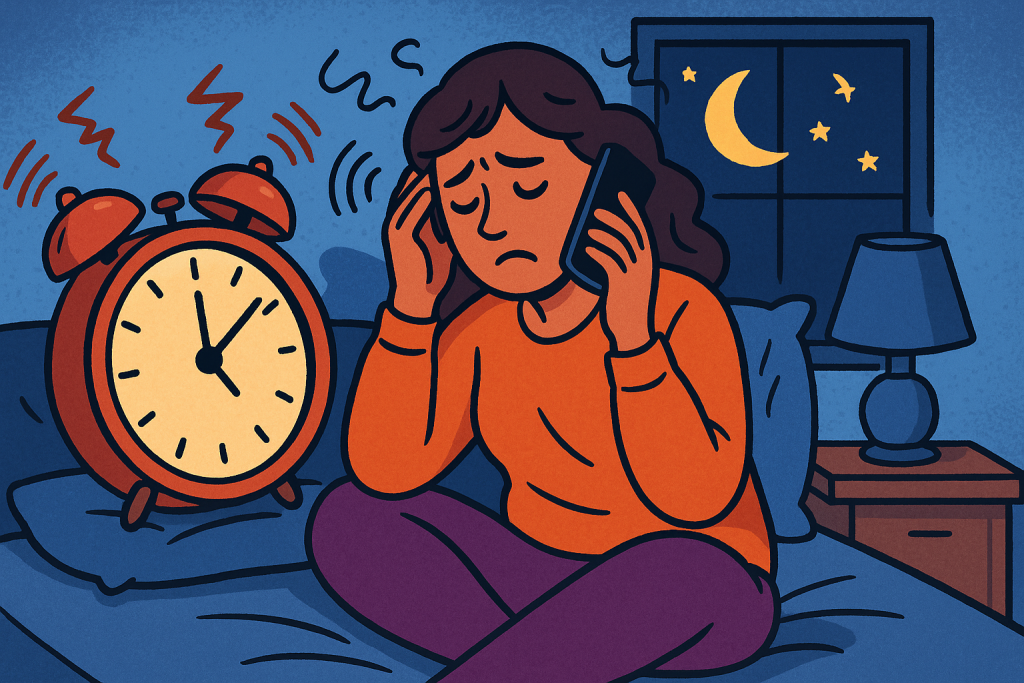From after-hours emails to the ping of a late-night Slack message – the expectation to be constantly available isn’t just stressful, it’s reshaping our brains. This article examines the hidden cost of always being on call mentally and offers practical strategies for managing it.

The cost of always being on call mentally goes beyond fatigue: it affects sleep, mood, cognition, and relationships. As remote work blurs boundaries and notifications become unrelenting, understanding and countering this toll has never been more urgent.
What Does “Always On Call” Really Mean?
“Always on call” isn’t limited to medical personnel or IT staff. Today, knowledge workers, parents, and gig economy workers face constant digital demands—checking email at dinner, responding to Slack at midnight, or waking to a phone alert. In this sense, nearly all white‑collar workers live in a perpetual “on‑call” state.
Why the Mental Toll Is Worse Than Ever
1. Constant Connectivity = Chronic Stress
The shift toward digital always-on work culture has shown a clear link between continuous connectivity and increased anxiety, depression, and stress. A recent overview found that constant exposure to messages and notifications fosters attention residue, disrupting concentration and elevating stress hormones.
2. Brain Structure May Be Changing
Emerging evidence suggests that excessive screen time reduces grey matter volume and alters cognitive control regions in the brain. Comparisons to mild neurotoxicity are being made—and while causality isn’t fully established, the correlation is concerning.
3. Sleep Disruption
Smartphone notifications at night wreak havoc on melatonin production and circadian rhythms. Studies show a 33 % drop in sleep quality and an average of 48 fewer minutes of rest per week. Poor sleep then amplifies stress and worsens mood—creating a destructive loop.
On-Call Culture in Professions: A Case Study
Research in occupational health reveals that even “off-site” on-call duties—from IT admins to utility workers—impede mental detachment. That inability to switch off leads to fatigue, emotional exhaustion, work–home interference, and poor performance.
Similarly, a 2025 report found 82 % of employees face burnout risk, a sharp increase from previous data. Recovery takes months and requires structural change.
The Real-World Costs
1. Reduced Productivity & Errors
Interruption-heavy work impacts attention and decision-making. One study equated the effects of constant on-call disruptions to impairment akin to a blood alcohol concentration of 0.05–0.10 %.
2. Poorer Mental Health
More than three-quarters of workers report burnout symptoms ranging from exhaustion to cynicism. Gen Z, in particular, is reporting mental-health-driven absenteeism—equivalent to one lost workday per week.
3. Organizational Costs
Burnout escalates healthcare costs, errors, turnover, and sick leave. Physician burnout alone is linked to increased patient readmissions and medical errors.
Understanding the “Cost of Always Being On Call Mentally” (Keyphrase Section)
The cost of always being on call mentally refers to the cognitive, emotional, and physiological burden of remaining mentally tethered to work—even during personal time. This adds up to:
- Attention residue—struggling to concentrate because your mind never fully transitions off work.
- Emotional exhaustion—feeling drained instead of rested even after downtime.
- Impaired recovery—leisure time isn’t restorative when you’re awaiting messages.
- Cumulative stress—ignoring rest needs leads to allostatic overload over time.
Signs You’re Paying This Hidden Toll
Watch for these red flags:
- Persistent mental fatigue, even after weekends
- Irritability or emotional flatness
- Difficulty concentrating on leisure or family time
- Frequent overnight alerts pulling you out of sleep
- Anxiety when disconnected or “offline”
8 Steps To Reduce the Cost of Always Being On Call Mentally
- Set firm boundaries
- Define personal “off‑hours” and mute alerts. Structure your day so work doesn’t bleed into rest.
- Use tech tools intentionally
- Schedule app-free periods or grayscale your phone. Block non-essential apps or set “Do Not Disturb” modes.
- Schedule recovery time
- Take genuine breaks without screens—walk, read print, cook.
- Establish rituals at day’s end
- Close your laptop. Log off Slack. Take a post-work walk or stretching session.
- Regular digital detoxes
- Try “phone-free weekends” or periodic digital sabbaticals. Studies show even 2‑week detoxes reduce stress and improve wellbeing.
- Encourage organizational change
- Advocate for no-response expectations after hours. Promote psychological safety and workload design that prevents burnout .
- Adopt mindfulness and attention training
- Use short breathing exercises or meditation to fully switch off after work.
- Monitor and reflect
- Keep a journal tracking how work interruptions affect your mood, sleep, or relationships.
Why It Matters Now (The Trend)
- A 2025 burnout survey shows significant generational strain—Gen Z is 3× more likely to take time off for mental health than older employees.
- In the post-COVID remote era, digital boundaries have dissolved: 82 % of workers are now at burnout risk .
- The mental cost of always being on call mentally is now front-and-center in discussions of hybrid work design and flexible scheduling.
Conclusion
The cost of always being on call mentally is real—and quietly devastating: reduced sleep, fractured focus, heightened stress, and emotional erosion. But it’s not irreversible. Intentional tech use, strong boundaries, recovery routines, and supportive workplaces offer a roadmap to regaining mental space before the toll becomes permanent.
References
On-call work and its impact on mental health and stress
Peters, S. E., & Schneider, G. (1999). On-call work and health: a review. International Journal of Occupational and Environmental Health. Available via PubMed Central.
www.ncbi.nlm.nih.gov
Cortisol responses to being on‑call
Willis, T. A., & Deaton, M. M. (2015). The strain of always being “on call”. Scientific American.
www.scientificamerican.com
Daily well‑being effects from on‑call schedules
Bamberg, E., Jacobsen, N., & Vahle-Hinz, T. (2025). Effects of on-call work on well-being: results of a daily survey. Journal of Occupational Health Psychology. Available via ResearchGate.
www.researchgate.net





